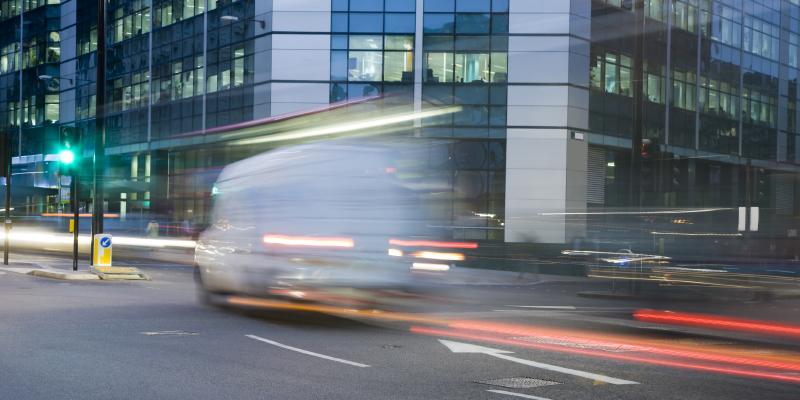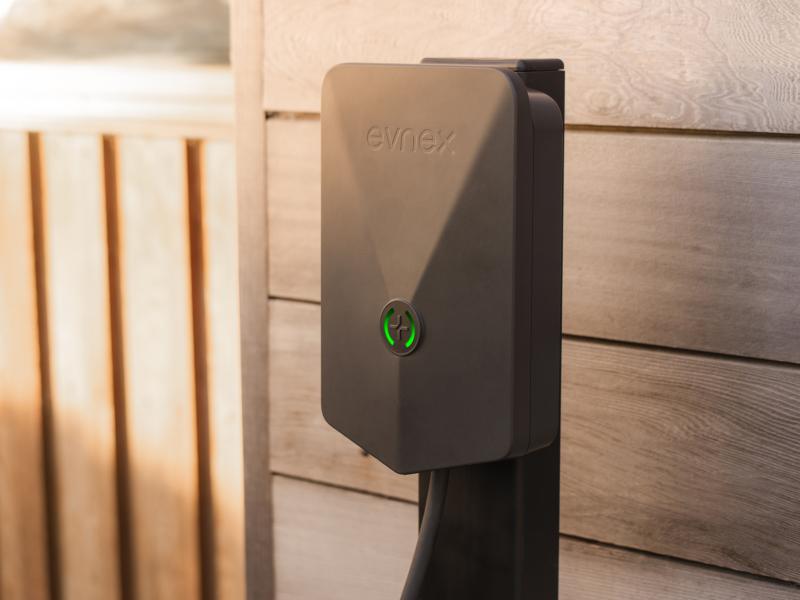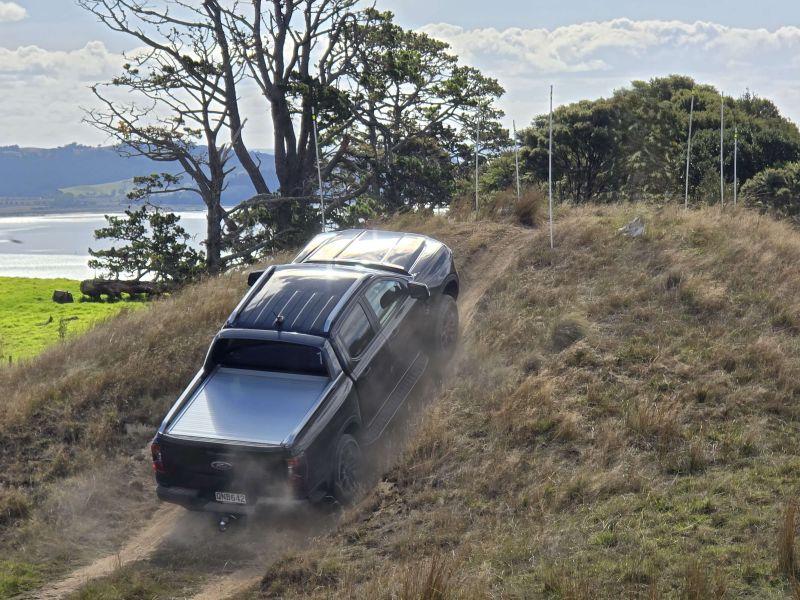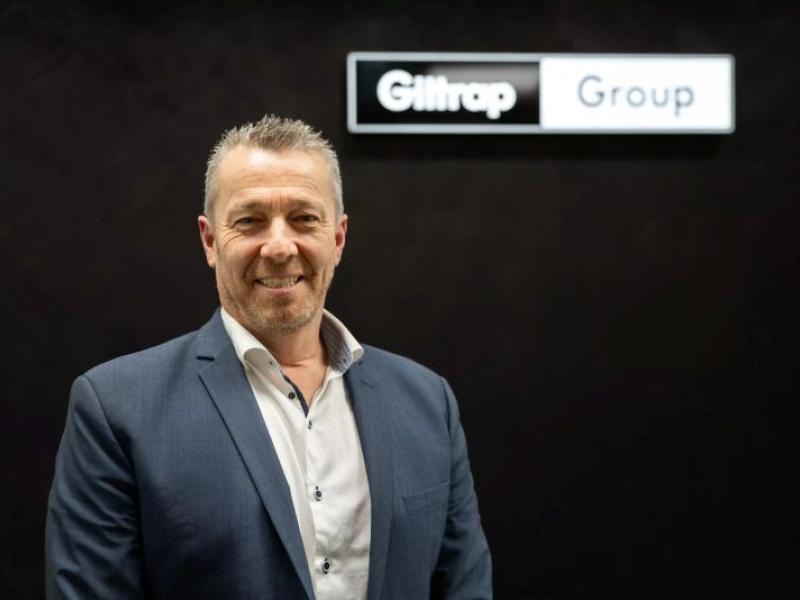Well, here it is, October 2018, which means it must be time for our annual look at the light commercial sector.
It’s been reminiscent of that ancient Chinese curse ‘’may you live in interesting times,’’ for the light commercial market this year. The good news is that as of August, the sector was up 3.2 percent on what it was in 2017. Furthermore, the number of share incresees is much greater than the number of those who lost ground. It just happened that those who lost ground have lost ground in a big way with drops of anywhere between 20 and 30 percent.
Still, there have been some solid gains to make up the checks and balances with both LDV and Mercedes-Benz seeing the most dramatic increases, not only in percentage jumps, but also in unit sales. YTD figures for LDV breaking four-digit figures comfortably and MB doubling its triple-digit ones.
The market was so close to tipping over into 4000 units by August, it’s a safe bet to say it’ll be a great finish for those supplying utes and vans as close out the year in another few months.
Popularity in the sector of course, stems from the rise of the utility as a replacement family vehicle and its sales successes spurred on by building contracts in both Auckland and Christchurch. As the tradies work more, they get paid more and they can upgrade their vehicles faster. OK, that sounds simplistic, but it just happens to be accurate. Try getting hold of a builder to do minor renovations in our main centres and see what happens.
And clearly, the Golden Child of the ute market is the Ford Ranger, which has taken the crown off Toyota not only in Hilux sales, but also when it comes to eclipsing Corolla. Ford of course, is pretty much divesting itself of traditional passenger cars and has gone a step beyond in creating a new sub-class of ute – that of the performance utility with the arrival of the Ranger Raptor.
This has led Ford’s rivals to do the same thing, and we are seeing the likes of Holden beefing up its Colorado at both factory and specialist tuning shop levels with the Colorado Extreme and the HSV Sportscats.
Volkswagen meantime, while it may not have the numbers, for sure it has the attitude as evidenced by the release of its giant-killing V6 – arguably, the most powerful engine in terms of kW anyway – from out of the factory.
We have also seen Mercedes-Benz come into the market with a very strong product offering to take on Volkswagen when it comes to adding an element of top flight class to a segment which has to date specialised in hauling all manner of messy and unpleasant cargo – not what you would typically expect form the brand with the three-pointed star on the grille!
And Toyota – once king of the hill, is now in the happy polace of coming back up to take a swing at Ford. Well, they say when you reach the top, there’s only one place to go and everybody’s trying to get you there. Toyota didn’t go into complete freefall however, despite the brand’s sales model revolution. The drop-off in sales was to be expected according to TNZ, but the registrations seen in recent times have shown that the brand was down, but far from out. Will Ford ute sales hold out till the end of the year, our will Toyota’s big sales gamble of Drive Happy be able to make up the difference with HiLux? Stay tuned.
The utes – showing 14.7 percent growth across all configurations YTD to August – are obviously the pointy end of the spear when it comes to commercial vehicle registrations, but what about the vans? Yeah, not so flash.
The registrations show a drop of 7.6 percent across all variations for the YTD to August period. Clearly, the van market is about due for its shot in the arm to rejuvenate sales and get the registration numbers up. Volkswagen has just gone through an upgrade programme for Crafter and Transporter, though the focus has been more on price to compete, rather than promoting desirability through features and spec.
Mercedes-Benz is just releasing the new Sprinter, which is held by many to be the benchmark van, despite Transit registrations from Ford absolutely eclipsing it the Stuttgart brand, and, while it is in a different class, the Toyota HiAce is still light years ahead of everyone else (at least it was in August, and we don’t think it’s going to be caught this year).
What we are keen to see is what will happen with van electrification. Currently in the new van market, LDV is the only game in town with a pure EV commercial that is out and being sold. Renault has product, but it is first generation stuff which the company is going to sit on until Gen 2 product arrives in 2019. Everyone else?
Clearly, the projected sales don’t stack up against the investment the distributors here would have to make, so whichever of the mainstream brands decides to get in the pool with LDV is likely to short circuit anyone else.
But let’s see who’s who and who’s got what:
FORD RANGER
The Blue Oval has cemented itself firmly in the minds of the Kiwi ute buyer. Consistently being the number one selling ute throughout the course of 2018, one might ask the question ‘where to now, Ford?’ And the answer lies in not only supplying the backbone utes – 4x2’s, 4x4’s in cab-chassis or well-side configurations, a range of comprehensive specification levels and a solidly-performing 3.2-litre, five-cylinder, 147kW engine with a choice of manual or automatic six-speed transmissions – but also bespoke performance utes, which stem from the same platform, such as the Ranger Raptor. In the meantime, Ranger’s rampant run at the top shows no signs of slowing, positioning it clearly as the benchmark ute to which others aspire.
FOTON TUNLAND
The first Foton to arrive in New Zealand was the Tunland utility and since then, the brand has introduced light commercial trucks and an SUV, with the best-selling product being the ute. Foton hails from China, but the vehicles themselves are built like well-thought out jigsaw puzzles with components supplied by respected brands, like Cummins, Getrag, Dana, Bosch and Borg Warner. Foton supplies 2WD and 4WD double cabs for our market and these are all powered by the 130kW, 2.8-litre, ISF turbo-diesel from Cummins with a choice of five-speed manual or six-speed automatic transmissions.
Foton Tunlands have a 3000kg towing capacity for the automatics and 2500kg capacity for the manuals and include a good level of specification, representing excellent value for money.
GREAT WALL STEED
Great Wall has effectively relaunched itself into the market with the slightly changed Steed, which happens to have the same engines as the previous V-Series models. The Steeds are due for a refresh in the short-term future, which will likely bring them onto a level playing field with contemporary styled and specified rivals, though currently, the leather heated seats and multi-functional steering wheel are visual hints that the brand is on the right track. The 2.4-litre petrol engine outputs 100kW and 295Nm of torque through a five-speed manual, while the two-litre 110kW/310Nm diesel offers a manual six-speed. Complementing the dual cab diesel is a single cab chassis or well-side body-style version. All have the option of 4x4 or 4x2 drivetrains.
HOLDEN COLORADO
Certainly the most aggressive ute maker in the current market, Holden continues to push Colorado to where GM always expected it to be – in the number one light utility sales spot. Gradual improvements – such as the inclusion of the MyLink infotainment and connectivity suite – are being made to lift the eight-model, something-for-everyone range of 2.8-litre, 147kW workhorses to lift them from a consistent third placing in Kiwi registration. The last quarter of 2018 will see the arrival of the Colorado Extreme, an integrated-into-the-range ute to appeal to those looking for rugged performance. This is demonstrating Holden New Zealand’s intention of having the Colorado as a major, if not the number one player in the ute segment.
ISUZU D-MAX
No longer an unknown quantity, the Isuzu D-Max has steadily increased its range offering to appeal to just about everyone looking to get into a contemporary ute with mainstream appeal but at a realistic price. Now available in three specification grades from LX to LS and the hero LS-T, D-Max offers Space or Single cab chassis, space cab ute and double cab ute body-styles with model specific 2WD/4WD drivetrains and transmissions. Common to all is the three-litre, 16-valve, turbodiesel with 130kW of power on tap and 430Nm of torque. Also common to all is Isuzu’s truck-builder reputation for clever durability features inherent in the engine design.
LDV T-60
It may still be regarded by some as a new kid on the block, but LDV’s T60 4x4 ute is what is referred to as a “fast burner”. Here is a ute which has come out of nowhere and is rapidly closing on both Mazda’s BT-50 and Volkswagen’s Amarok in year-to-date registrations. The T60 is available in two specification levels with the option of six-speed manual or auto in both. Body styles include a double cab and a single cab chassis, powered by a 2.8 turbo-diesel with 110kW and 360Nm torque at its disposal. Well specified – especially in the top end model, which offers lane departure warning, cruise control, Apple Carplay and Android Auto integration, along with heated leather seats, reversing camera, blind spot monitoring and an electronic differential lock to mention but a few – the T60 delivers when it comes to payload too, hauling 1025kg in the 1188 litre rear tray.
MAHINDRA PIKUP
There is no calling the Mahindra Pikup a visually desirable ute, but that has not stopped value-seeking buyers taking the Mahindra challenge, driving one and voting with their chequebooks. And despite humble registration figures, the word on Mahindra’s four model Pikup range is good. With a single cab chassis, single cab flatdeck, double cab chassis and double cab wellside, all running a six-speed manual transmission from a 2.2-litre, four-cylinder, common-rail diesel with 103kW power output and 330Nm torque figure from 1600rpm, the PikUp is available in 2WD or 4WD with an electric shift Borg Warner transfer case and an Eaton mechanical differential lock.
MAZDA BT-50
Mazda’s stylishly swoopy workhorse continues to truck along with registrations consistently around six percent market share, proving that some ute buyers at least, are interested in more than just substance. Subjective styling notwithstanding, the BT50 carries its credentials well, with a 3.2-litre, 147kW, 470Nm, five-cylinder turbo diesel engine doing the business across a 15-strong model range, which predominantly features a six-speed automatic transmission. Six-speed pot stirrers are however, available in all body-style and drive combinations, other than the unique-to-Mazda Freestyle cab variant. Despite testimonial evidence suggesting the Mazda ute is an outstanding vehicle with an enviable reputation for quality and reliability, BT-50 looks to follow in the wheel-tracks of Mazda’s long-lived B-Series utilities: a solid and dependable performer that resists the whims of change.
MERCEDES-BENZ X-CLASS
The most recent entrant into the light utility vehicle landscape, Mercedes-Benz X-Class is also quite possibly the most eagerly awaited ute to our shores – by the consumers anyway. It comes to us in three specification grades, the Pure, Progressive and Power the last two being twin turbocharged versions of the four-cylinder, 2.3-litre engine found across the range. Within the Pure spec level, the single turbo engine (badged X220d) outputs vary between 120kW and 403Nm and 140kW and 450Nm of the X250d engines making up the rest. Standard transmission is a six-speed manual, though there is a seven-speed automatic available for the X250d lines, which are exclusively 4WD, regardless of chassis cab or pick up body style. The X220d offers 2WD cab chassis/pickup and 4WD pickup.
MITSUBISHI TRITON
Possibly better hailed the Mitsubishi Tried n True, the evergreen utility just keeps on keeping on, with the Triple Diamond brand reinventing its workhorse with almost predictable regularity. It is a tribute to Mitsubishi that Triton especially, is built to be futureproof, adopting new technologies as they become available. At its core, Triton runs a 2.4-litre direct injection turbo diesel with Mitsubishi’s MIVEC technology supplementing the Dakar-inspired 4WD system. An extensive offering of specification, body styles and drivetrain options for Triton enables Mitsubishi to present a ute of long-standing pedigree with equipment levels to suit most buyers, as well as the reassurance of a well-established service network and comprehensive post-purchase warranty.
NISSAN NAVARA
Nissan’s Navara has been the backbone of the company since the 1960s and today forms the basis of Nissan’s market share in this country. With the rising growth of market players and especially the availability of lower-priced entrants to New Zealand, Nissan’s market share has slipped from a one time third to a consistent 4th in registrations with a sub-10 percent market share. In saying this, a recent drive of the Nissan Navara in Australia prompted the question of: "is this fair?” The Navara’s performance in every aspect shows no lacking qualities and the extensive range offers a solution for all comers. Navara has received recent upgrades as well as some accessorising ‘bling’ which is both practical and aesthetic as befits a modern truck. Factor that in with the tried and proven abilities to go ‘where the wild things are’, which the Navara can, and it’s worth revisiting the brand if you are considering a replacement or more accurately, an upgrade.
SSANGYONG ACTYON
When first launched, the Actyon lifted the buyer’s perception of SsangYong as more than a brand with tricky names as its claim to fame. The contemporary – if polarising – design was an interesting counterpoint to the two-litre turbo-diesel engine which was ahead of its time as a small capacity, but very respectable powerplant. Over time, the Actyon retained its funny name, but the design became more mainstream and of course, the brand proved very popular through its super aggressive pricing and ‘special order’ variants which found themselves permanent additions to the range. The Actyon paved the way for other SsangYong products and will no doubt serve the brand for more years to come, despite the incipient arrival of the much larger Musso, which replaces the Actyon.
SSANGYONG MUSSO
You may have remembered
the name, but this is a new Musso Jim, and it aint nothing like what you knew. SsangYong has revitalised the name of its first ever entrant into New Zealand, but the Musso now is not anything odd – its just massive! The Musso for 2018
is a double cab utility and while SsangYong might be known for its hmm, interesting designs in the past, this one is remarkably conventional, but everything’s bigger, except we assume, the price. The Musso runs on huge feet, which it likely needs to carry the oversized cockpit and cargo carrying bit on the back. If ever there was a truck built for Americans but not by Americans, the Musso would be a darned good contender! Yet to be driven, but what we saw of the beast at Fieldays this year, taking up a fair chunk of SsangYong’s marquee real estate, was impressive
beyond words.
TOYOTA HILUX
Toyota had clearly hit a pothole its Hilux found challenging recently, which has seen the longstanding King of the ute take a bit of a tumble to Ford’s Ranger, but things are turning around for Hilux with recent registration figures suggesting Toyota’s ute may have been down, but certainly not out. Interestingly, the growth is coming from the nine-model, 2WD offerings, with the 12-model 4WD versions are putting in a solid increase in registrations too. The Hilux offers possibly the most extensive range combination of any utility supplier, with a body style, specification level, drivetrain and transmission option to suit practically every application. Toyota is not merely resting on the Hilux’s estimable reputation, with new tech upgrades undoubtedly playing a part in the model’s resurgence.
TOYOTA LANDCRUISER 70
Toyota would have us believe the LC70 is New Zealand’s ultimate working ute, and given its reputation for dependable durability, the registrations and the minimal improvements or changes to the ute that really is a small truck, perhaps this is not too far off the mark. With a six-model line-up including troop carrier variants as well as the cab chassis, single and double cab utilities, the LC70 is exclusively powered by a twin turbocharged, 4.5-litre V8 diesel running through a manual five-speed transmission. The engine outputs 151kW of power and 430Nm of torque which, combined with the design strengths of the 70 Cruiser, make it a fixture in the local ute market.
VOLKSWAGEN AMAROK
The Amarok is certainly demonstrating its desirability through distinction if the registration numbers are anything to go by. Year-to-date sees a definite increase for the brand in the 4x4 segment, which is only to be expected as all Amaroks are 4MOTION models and all are diesels; three with two-litre engines and three three-litre V6 models, within the six-vehicle line-up. Power and torque figures are 132kW and 420Nm and 165kW with 550Nm respectively. Volkswagen is making an unashamed bid for the most powerful ute in the market and given the ‘overboost’ facility in the top end models, which takes the power output to 180kW for a 10 second burst, that bid looks to have been a success.






